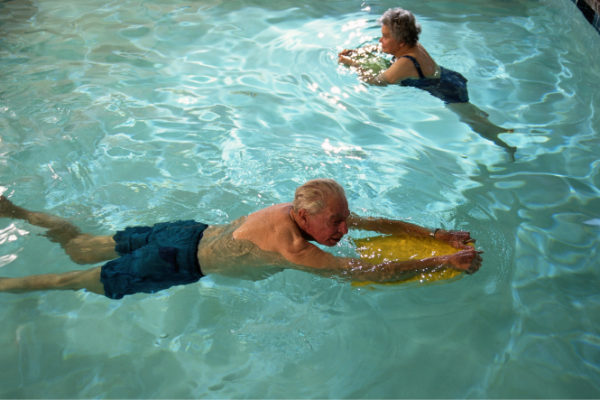Wishing everyone happy holidays and a joyful New Year from the Healthify team. Don't forget to Slip, Slop, Slap and Wrap!
Physical activity and managing pain
Key points about physical activity and managing pain
- It might not seem like the right thing to do, but if you have chronic pain becoming more active can really make a difference.
- Physical activity and exercise programmes are increasingly understood to be an effective way of managing ongoing (chronic) pain.

Chronic pain is any pain that lasts longer than 12 weeks or 3 months. About 1 in 6 New Zealanders live with chronic pain and no two people are affected in the same way. Chronic pain can further contribute to disability, anxiety, depression, sleep disturbances, poor quality of life and healthcare costs. Read more about chronic pain.

Image credit: Canva
It's common to avoid physical activity or exercise when you suffer from chronic pain, due to the worry that movement might make the pain worse. However, limiting and reducing physical activity can make things worse for you in the long term.
Not being active can make the pain worse and it also puts you at greater risk of injury. You may also be less able to carry out daily activities such as cooking, showering, cleaning or walking. This is known as deconditioning.
Instead, plenty of research has shown that physical activity and exercise can help you manage chronic pain. It can help you to gradually engage in more activities, and live a normal life.
Other benefits of being physically active include:
- better heart health and circulation
- improved muscle health, stamina and strength
- having social contact with others
- better quality of life
- better mental health.
Your physiotherapist or healthcare provider might recommend specific exercises depending on your condition. If not, the key to getting started is choosing something you can do on both your good days and bad days. Don't expect to make progress too quickly. Start low and go slow.
If you're concerned that exercise could make you feel worse, ask a family member or friend to do the activity with you, until you become confident. Or if you think joining a group might work for you, you may want to explore a green prescription to see what appropriate physical activity groups and sessions are available in your community. You can search the Live Stronger for Longer(external link) website to find a strength and balance class near you.
Types of exercises that you can get started with to help manage chronic pain include:
- stretching exercises
- strengthening exercises
- cardiovascular exercises.
Stretching exercises
Stretching exercises can help increase flexibility, loosen tight muscles and improve your range of motion. It can help you engage in your daily activities and move more easily. Lower back stretches are particularly useful for lower back pain. There's a variety of stretching exercises you can try, such as standing or seated yoga, pilates, tai chi.
Strengthening exercises
Strengthening exercises help build strong muscles and improve your strength. Examples of strengthening exercises include squats, bicep curls, leg lifts on all fours and wall push-ups. Or you can try light weights and using a resistance band.
Cardiovascular exercise
Cardiovascular exercise improves your aerobic capacity (the amount of oxygen your body takes in) and can be helpful for chronic pain. It can be done with little or no equipment. Examples include walking, aqua walking, swimming or cycling.
How does exercise help with chronic pain?(external link) Exercise Right, Australia – downloadable booklet
How and why to exercise with chronic pain(external link) Integrative Pain Science Institute, US
Live stronger for Longer NZ – find a community strength and balance class in your area (external link)
7 exercises for reducing chronic pain(external link) Healthline, US
7 lower back stretches to reduce pain and improve mobility(external link) Healthline, US
Stretches and exercise for lower back pain, from a PT(external link) HSS, US
Strength exercises(external link) NHS, UK, 2024
Balance exercises(external link) NHS, UK, 2023
Flexibility exercises(external link) NHS, UK, 2023
Brochures
Exercise and posture(external link) NHS, UK – includes stretching exercises
References
- Navigating pain(external link) New Zealand Pain Society
- Helping patients cope with chronic non-malignant pain – it’s not about opioids(external link) BPAC, NZ, 2014
- Dominick C, Blyth F, Nicholas M. Patterns of chronic pain in the New Zealand population(external link) NZMJ 2011;124(1337):63–76
Credits: Healthify editorial team. Healthify is brought to you by Health Navigator Charitable Trust.
Reviewed by: Roselyn Singh, Health Coach, Auckland
Last reviewed:





